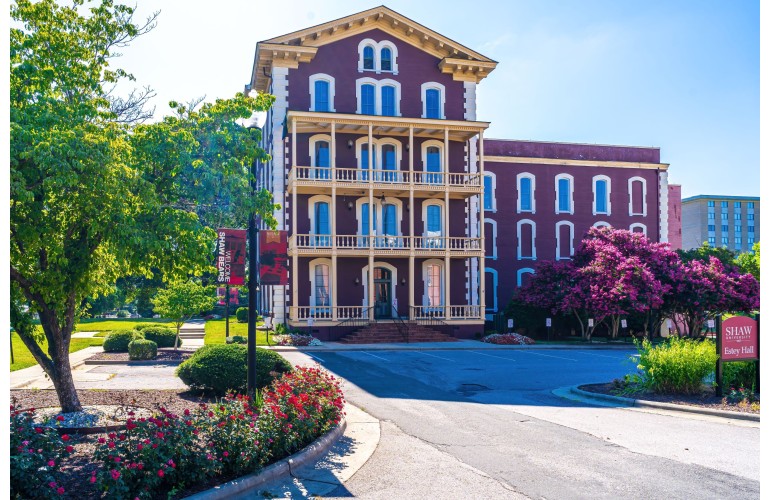 Subscribe
Subscribe- Login
-
/
Sign Up
- US Black Engineer
- >>
- Articles
- >>
- EDUCATION
- >>
- On Campus
- >>
- The Best Colleges rankings for Historically Black Colleges and Universities in 2024
From the spring of 2023 to the summer of 2023, U.S. News & World Report conducted a survey of the president, provost, and admissions dean at historically Black colleges and universities (HBCUs).
Each institution received three surveys, asking recipients to rate all HBCUs they were familiar with based on undergraduate academic quality. The survey considered each school’s scholarship record, curriculum, and quality of faculty and graduates to calculate the overall HBCU rankings.
U.S. News & World Report used the responses from the two most recent years to determine the rankings, instead of only the most recent year. This was done to incorporate more excellent representation of the views of academics at HBCUs and to decrease the year-to-year volatility of the results in the peer reputation ranking factor.
77 HBCUs were ranked by U.S. News based on the quality of their undergraduate education. Of the 77 ranked HBCUs, the top 90% are displayed with their ranks.
More than half of a school’s rank comes from its success in retaining and graduating students within a standard time frame, social mobility, earnings of graduates compared to high school graduates, and graduate indebtedness, all outcomes.
This receives the highest ranking because degree completion is necessary to acquire the full benefits of undergraduate study from employers and graduate schools. U.S. News approaches graduation from diverse angles.
The ranking of colleges is based on various measures, including graduation and retention rates, social mobility, graduate indebtedness, and college graduates earning more than high school graduates.
The graduation rate indicates the average proportion of a class earning a degree in six years or less, and the retention rate indicates the average proportion of first-year students returning the following fall.
The social mobility factor considers the success of a school in promoting social mobility by graduating students who received federal Pell Grants. The social mobility measure added new elements to first-generation graduation rates this year.
The U.S. News & World Report’s latest rankings have revealed that Florida A&M University (FAMU) has achieved its goal of ranking No. 91 among the Top Public National Universities.
This is part of FAMU’s five-year strategic plan, which has also seen the university recognized as the top public historically Black college and university (HBCU) for the fifth consecutive year, moving up to No. 3 among all HBCUs.
The HBCU ranking now includes two new indicators – first-generation graduation rates and graduation performance. These indicators are the same calculation as Pell graduation rates and Pell graduation performance, respectively, but based on graduation rates of federal loan recipients who were the first in their families to attend college.
Graduate indebtedness is another factor that assesses each school’s average accumulated federal loan debt among borrowers. The calculation is averaged from combined 2019-2020 and 2020-2021 data.
The proportion of a school’s federal loan recipients who earn more than a typical high school graduate salary – four years after completing their undergraduate degrees – is also considered. This is reported in the College Scorecard and assesses college grads’ earning potential compared to high school graduates.
FAMU has improved two spots on the Social Mobility Index, from No. 23 to No. 21. This demonstrates the University’s ability to positively impact the economic trajectory of its students and their families.
FAMU President Larry Robinson emphasized that the ranking reflects the collective effort and commitment towards the success of FAMU’s students and making good use of the funds invested in the university.
Robinson also stated that the latest rankings will inspire the FAMU community to strive for even higher achievements and continue to hold forth the promise of opportunity for young people and their families.
Provost and Vice President for Academic Affairs, Allyson Watson, who was promoted from serving as the College of Education dean, said the rankings reflect FAMU stakeholders’ expectations for the University.
Watson emphasized that FAMU’s progress in the U.S. News & World Report’s rankings underscores the University’s unwavering commitment to excellence.
The U.S. News & World Report’s list includes other ABET-accredited HBCUs and notable facts about each. These include Alabama A&M University, Hampton University, Howard University, Jackson State University, Morgan State University, the University of Maryland, Eastern Shore, Virginia State University, Norfolk State University, North Carolina Agricultural and Technical State University, Prairie View A&M University, Tennessee State University, and Tuskegee University.



